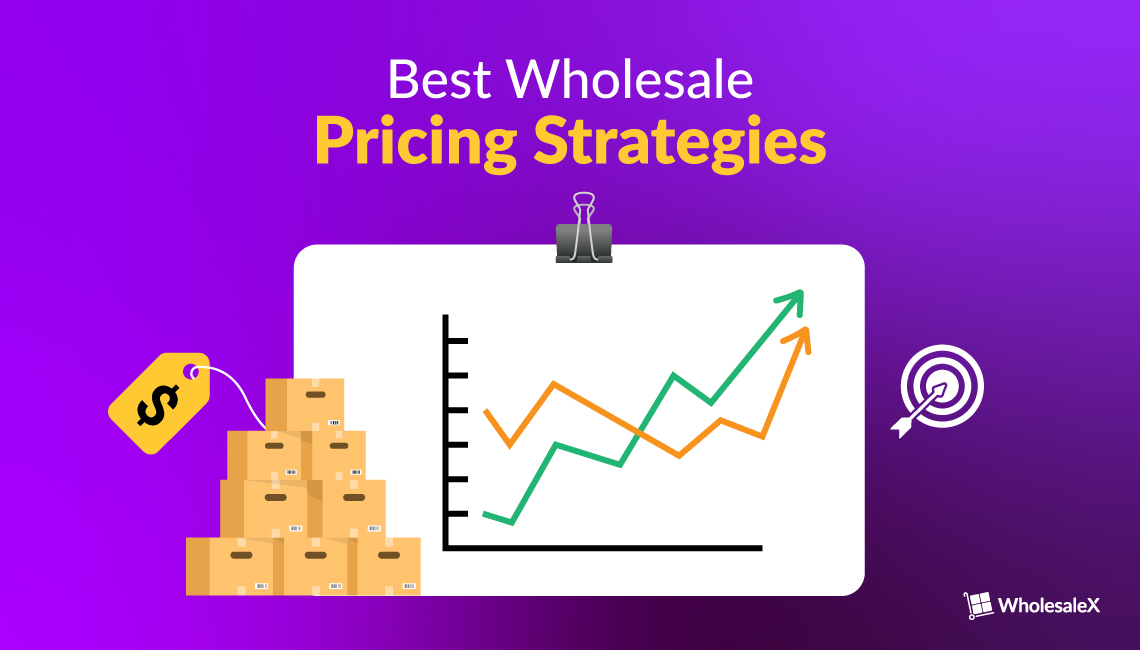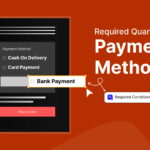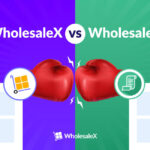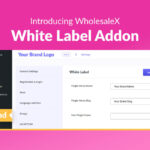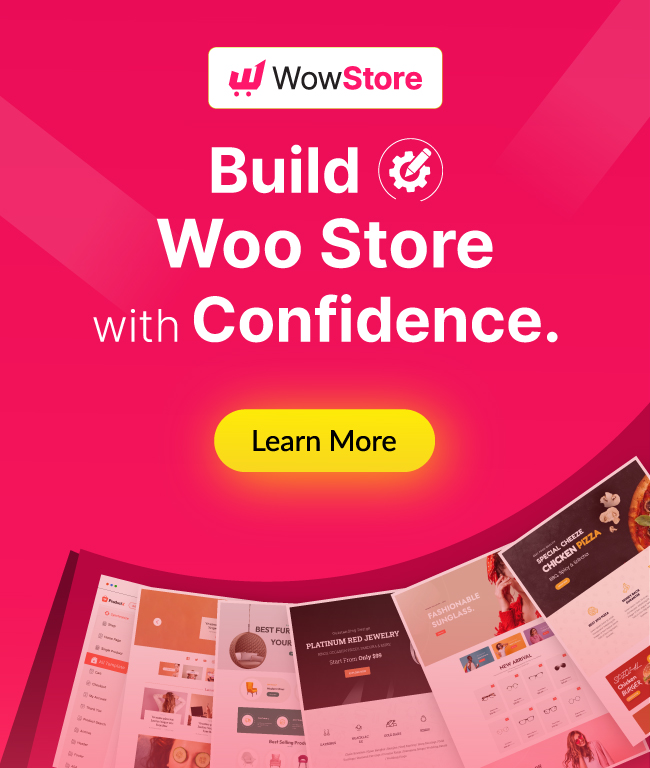If you are into wholesale marketing, then you must know the best wholesale pricing strategies play a crucial role in boosting the sales of your business. Implementing effective strategies can help you attract more customers, increase revenue and grow your business.
According to a study conducted by Statista, B2B e-commerce in the US is expected to reach $3 billion by 2027, making wholesale e-commerce a lucrative venture for the future.
Now this makes understanding and implementing wholesale pricing strategies ever so essential for wholesale e-commerce businesses in the future for sustainable growth.
Let’s find out different pricing types of wholesale for B2B e-commerce businesses and the effective wholesale pricing strategies that should be implemented for wholesale business success.
Different Pricing Types for Wholesale E-commerce Business
Wholesale pricing can be categorized into a number of types. This list is rather extensive, but we have outlined and briefly described it.
You should know the purpose of this pricing and decide which pricing types would be best for your business.
- Bundle pricing: In this pricing, you bundle related products together and offer them at a discounted price compared to purchasing each item separately. This encourages customers to buy more items and increase their overall spending.
- Geographic pricing: This concept of geographic pricing refers to different prices being charged in different regions or markets for the same product or service. Shipping costs, taxes set by the country where the product will be distributed, and the amount consumers are willing to pay to determine the price difference.
- Psychological pricing: In this type of pricing, prices are displayed lower than whole numbers, which is a common technique used by businesses. A slight difference in prices can make a massive difference to customers.
For instance, prices listed at $199 may be seen as significantly cheaper than those listed at $200. - Volume discounts: In this pricing setup, you provide discounts for customers who purchase larger quantities of products. This incentivizes bulk buying and leads to increased sales.
- Economy pricing: With this basic wholesale pricing, prices are kept low by using a volume-based model to determine revenue. This method targets a price-sensitive segment of the market by keeping prices low.
- Price skimming: This refers to the offer of a high-priced product to gain the most revenue. With this, businesses are able to recover their production costs and earn more before their competitors enter the market.
- Cost-plus pricing: It is also known as markup pricing, and it involves adding a fixed percentage to the item’s cost. In setting a cost-plus price, raw materials, and production costs are added to overhead costs.
- Competitive pricing: This pricing involves setting prices based on those of your direct competitors. It differs from cost-plus or value-pricing, which considers other factors like product demand and production cost. Store owners can choose to offer prices above, at, or below their competitors when using this wholesale pricing strategy.
- Penetration pricing: In this pricing setup, low prices are set by the companies to enter into new markets or for the launch of a new product or service to entice customers. Additionally, it prevents competitors from entering the market with a similar product because they will have to lower their prices.
- Demand pricing: This pricing takes consumer demand into account to set prices. It considers the perceived value of a product or service and includes various pricing models like price skimming, price point, bundle pricing, and penetration pricing.
Effective Wholesale Pricing Strategies to Follow For Your Business
Analyze the Market and Competitors
Before you set sail, you need to make sure you are doing proper market research. Check your competition and their wholesale price products or retail prices. You can stand out with lower prices or quality products. This knowledge helps you decide on your pricing.
Your brand’s perception matters for pricing. If people like your brand, businesses trust you. Selling lots of items at once at a competitive price can attract big stores.
When selling a lot, consider space, demand, and money. Balancing these saves money and keeps things organized.
Different products need different selling approaches. Light items can be sold in bulk, but heavier ones might need a unique approach.
For the right quantity to sell at once, check similar sellers. This guides your decision.
To stand out, try various strategies against competitors. But don’t lower prices too much. Balance affordability and profit.
Know Your Costs Inside Out
Complete cost knowledge allows you to set wholesale prices that result in a satisfactory profit margin and optimize your operations. Knowing all the costs associated with your products or services is crucial for profitability. It goes beyond basic expenses and includes:
- Production Costs: These are the raw materials, labor, and any expenses directly related to creating your products or services.
- Overhead Expenses: Every ship needs a sturdy hull, and every business has overhead costs like rent, utilities, salaries, and other operating expenses.
- Shipping and Logistics: The currents and waves that carry your goods to the customer’s shore. Understanding shipping and logistics costs is crucial, especially when selling across international borders.
Understanding these cost components provides a comprehensive expenditure overview. This equips you to set profitable wholesale prices that align with goals and avoid pricing mistakes.
Invest time to know costs deeply; it’s a beneficial long-term investment.
Implement Tiered Pricing
Tiered pricing rewards customers as they advance. Different price tiers encourage buying more for better prices and benefits. This boosts sales and revenue in the long run.
This approach builds loyalty and recognition among customers, fostering relationships beyond transactions.
Tiered pricing also helps clear inventory through lower prices, exclusive deals, and reduced stock levels.
For success, clearly present tiers across channels. Make sure customers understand how to unlock benefits – by spending or buying specific products.
You can also read: How to Set Quantity-Based WooCommerce Tiered Pricing
Set Minimum Order Quantities (MOQs)
Minimum order quantities (MOQs) bring efficiency to your inventory or order management process. Fewer, larger orders save time and resources. You can reap many advantages while streamlining your operations and reducing costs by establishing a baseline quantity that customers must meet.
MOQs encourage bulk purchasing, leading to volume discounts. Fewer small orders mean less packaging and shipping costs.
But balancing MOQs is key. Create a “sweet spot” that benefits both large-scale and small buyers. Consider tiered pricing and incentives to surpass order thresholds while catering to different buyers.
MOQs foster efficiency and profitability, not barriers for customers.
Offer Seasonal and Promotional Pricing
You can capture the magic of seasons and holidays with special pricing. This boosts sales, brand awareness, and loyalty.
Special pricing maintains competitiveness and clears inventory efficiently, aligning with today’s value-seeking consumers.
More precisely, the reason offering seasonal and promotional pricing to customers is a valuable wholesale strategy is that it:
- Attract Customers: This pricing can grab the attention of potential customers, enticing them to make a purchase. Reducing prices during specific seasons or running limited-time promotions creates a sense of urgency, encouraging customers to take advantage of the special offers.
- Boost Sales: Lowering prices during certain seasons or promoting special discounts can lead to an increase in sales volume. By offering competitive prices, you attract more customers who are looking for deals or discounts, ultimately driving greater revenue.
- Provides Competitive Advantage: Implementing seasonal and promotional pricing strategies allows your wholesale business to stay competitive in the market. By carefully analyzing market trends, customer preferences, and competitor activities, you can determine when and how to offer discounted prices or promotions that set you apart from other wholesalers.
- Clear Inventory: Seasonal discounts help clear excess inventory levels, especially if certain products have higher demand during specific times of the year. Promotional pricing lets you move inventory quickly, making room for new products or preventing obsolete stock.
- Increases Customer Loyalty: Offering periodic discounts as part of your wholesale pricing strategy can foster customer loyalty. Customers appreciate cost savings and may become repeat buyers if they consistently find good deals with your business.
So whether it’s summertime fun or the holiday hustle and bustle, find creative ways to offer special pricing or discounts that will make your customers jump for joy while boosting your business’s success.
You can also read: How to Implement a Promotional Pricing Strategy
Bundle Products for Value
Think of it like you’re in a bustling marketplace and stumble upon a collection of products bundled together at a special price. Suddenly, those individual items take on a new allure for you – it’s the magic of bundling!
Craft bundles strategically by combining complementary products for your customers. Pair items like shampoo and conditioner or offer e-books with audiobooks.
Curated bundles cater to customer needs, boosting appeal and cart additions. Bundling creates a multi-sensory, treasure-like experience, elevating sales.
So make sure to embrace bundling’s power for a sales boost and elevated customer experience. Your business will soar to new heights.
Set Clear Discount and Markup Policies
You walk into a store and see two identical items, side by side.
One is priced at $50, while the other is tagged at $70. Confusion sets in – why the difference? Is it a mistake? Customers want clarity when it comes to pricing, and that’s where transparent discount and markup policies come into play.
Transparency builds the trust of your customers. Fair, consistent pricing fosters loyalty and confidence, essential for lasting connections.
Balancing personalized discounts based on factors like history and loyalty strengthens bonds. Transparent pricing assures customers of fair deals without surprises.
Open pricing strategies level the field and establish reliability. Honesty in pricing fosters lasting customer relationships, creating a trustworthy business image.
Monitor Sales and Adjust Pricing
Staying competitive with a dynamic pricing strategy should be your primary tactic.
Monitor metrics like revenue and units sold to assess success.
Engage with your customers for insights and watch competitors’ pricing. Automate data collection with advanced tools for real-time updates.
Be ready to adjust prices due to costs, demand, or trends. Experiment with models like Cost-plus or value-based pricing for optimal results.
But you should also realize the fact that wholesale pricing isn’t static; it needs continuous monitoring and adaptation. Use data, flexibility, and optimization to keep your business thriving.
Leverage WholesaleX for Dynamic Pricing
Dynamic pricing refers to the process of creating pricing and discount rules based on multiple criteria such as user roles, total items in cart, product categories, product attributes, etc.
Plugins like WholesaleX have the dynamic rule feature in-built with all essential pricing and discount criteria.
WholesaleX is a dynamic B2B WooCommerce solution for powerful e-commerce entities. with WholesaleX, you have the liberty to deploy high-functioning wholesale e-commerce stores. Here’s what it offers:
Although advanced tools are excellent for setting dynamic product pricing, there are certain strategies you can implement with WholesaleX:
- You can offer product discounts to clients who are willing to buy products in large quantities.
- Make product tiers – offer higher discounts for tiers with higher product quantities.
- Set discounts based on the items in the cart – the higher the cart price items, the higher the discounts.
- Offer discount on payment methods – this applies when you have multiple payment methods.
- Based on the order quantity, set discounts – if a customer agrees to buy a minimum or maximum number of products, offer them a specific discount.
- BOGO discounts is another great way – it’s like a buy one, get one situation.
As a seasoned business person, you must know balancing demand and inventory is like navigating a narrow strait. Fortunately, you can do it all with WholesaleX!
You can adjust prices in real-time to reflect fluctuations and keep your customers happy and satisfied.
FAQs on Wholesale Pricing Strategy
What is the meaning of wholesale price?
A wholesale price is the cost of a product charged when selling in large quantities to trade or distributor groups rather than to individual consumers.
To calculate the wholesale price, you add the cost price of the product to the manufacturer’s profit margin. This enables businesses to offer discounted rates to bulk buyers and ensure profitability in wholesale transactions.
How do you calculate wholesale price to retail price?
To calculate the wholesale-to-retail markup percentage of a product, you can use the following formula:
Retail Price = Wholesale Price ÷ (1 – Markup %)
Here’s how it works:
The wholesale price is the cost of the product from the manufacturer or supplier.
The markup percentage is the ideal percentage you want to add to the wholesale price to determine the retail price.
By plugging in the appropriate numbers, you can easily find the optimal retail price for your product. This formula helps ensure that you achieve the desired profit margin while setting competitive retail prices.
Is there any reliable tool to implement a wholesale pricing strategy better?
If you are running a B2B wholesale business in WooCommerce, WholesaleX can be a great option for you to implement a wholesale pricing strategy into your different pricing models.
Implement the Right Strategy to Make the Best of Your Wholesale Pricing
In the vast ocean of business, wholesale pricing is your mighty sail, steering you toward success. Just like a skilled captain knows that the right strategy can make all the difference in navigating rough waters, so too must you wield the power of effective pricing to sail smoothly toward profitability.
Remember, it’s not just about throwing any number out there and hoping for the best. It’s about understanding the currents of your market, knowing the depths of your costs, and charting a course that aligns with your business goals.
You can set your sails for growth and prosperity with the right wholesale pricing strategy. Whether you opt for competitive pricing to stay ahead of the pack or demand pricing to ride the waves of consumer desire, the key is adapting, iterating, and refining.
As you embark on this pricing journey, remember to stay nimble. Keep a keen eye on your competition and customer demands, adjust your pricing accordingly, and always be open to learning from the winds of change.

